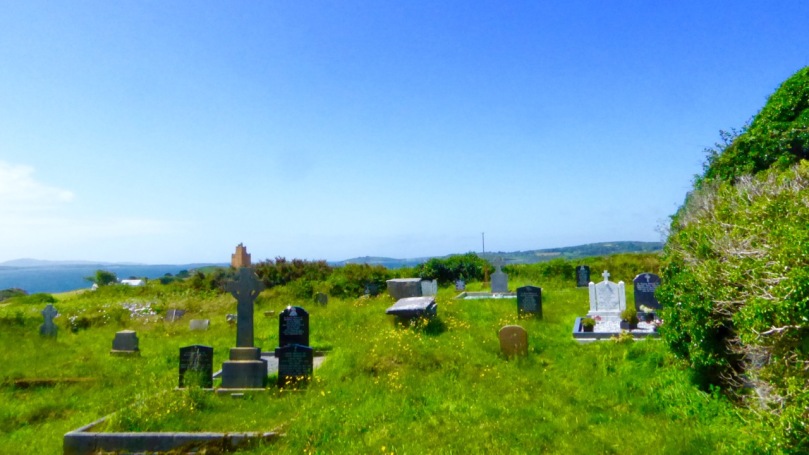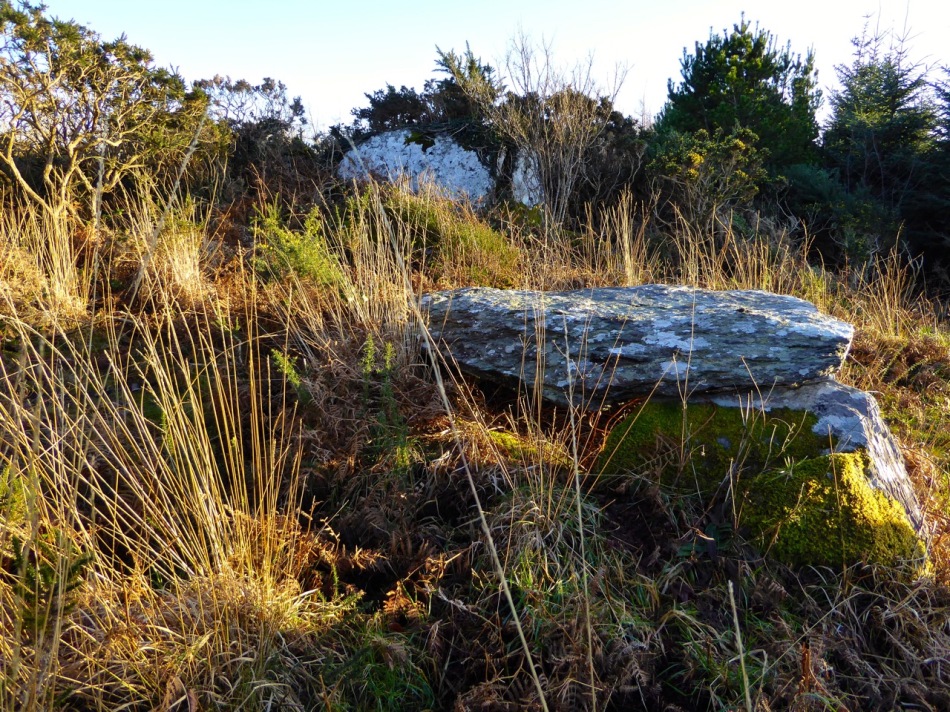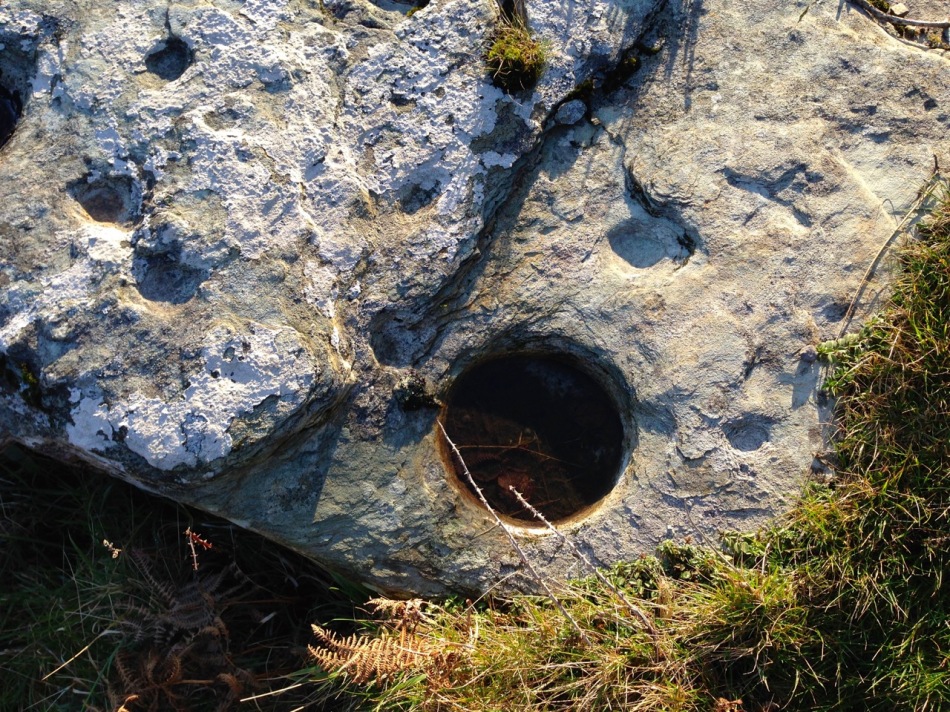
Most of what we think we know about traditional Catholic practice in the period leading up to the famine is wrong. The religious environment of the first half of the nineteenth century in Ireland was very different from what we experience today, and different too from what we understand as ‘traditional’ Catholicism and Protestantism in Ireland. In imagining this period we have been over-conditioned by our own experiences of Ireland in the twentieth century – a country in which each town or village was dominated by a large Catholic church, in which the priest was a man of great influence, the population (90% Catholic) went to mass every Sunday and participated in sodalities, novenas and retreats regularly, and in which children attended schools where Catholic Doctrine was integrated into the curriculum. It’s a picture of a devout, disciplined, orderly and mono-cultural society. Meanwhile, the Protestants attended a mysterious ‘service’ (mysterious because it was a sin to go inside a Protestant church), practised birth control, often spoke in a different accent from us, and appeared to us not to take their religion as seriously as we did. None of this, it turns out, was the norm in most of Ireland, and definitely not in the isolated parishes of West Cork, in the period leading up to the famine. Let’s look at the situation for Catholics first, as we lead up to the story of Teampall na mBocht (link to Part 1 at the bottom of this post).

The Information post for the Bronze Age wedge tomb at Altar shows a scene in which the wedge tomb has been repurposed as a mass rock
Catholic Emancipation, won by Daniel O’Connell in 1829, finally lifted the numerous legal restrictions under which Catholics in Ireland lived their lives since the enactment of the first and subsequent Penal Laws from the early seventeenth century. The legacy of those laws was fully and poignantly alive in Kilmoe Parish – the townland in which Teampall na mBocht was built is called Altar, after a prehistoric wedge tomb across the road from the church which had served as a Mass Rock. It was a powerful symbol, a reminder that Protestants had been free to build churches and hold services under shelter, while Catholics were not. An alternate name for Teampall na mBocht is The Altar Church (see lead image)

The Bronze Age wedge tomb known as The Altar
While some of the worst constraints of the Penal Laws had been lifted in practice during the 18th century, the Church of Ireland remained the official Established Church. This meant that the whole population was required to support it through ‘tithing’ – everyone, no matter their religion, had to pay a tax equal to one tenth of their earnings. Especially after Catholic Emancipation, the inequity of this led to several years of conflict known as the Tithe Wars. In 1838 an Act of Parliament changed the way tithes were collected. While this had the effect of dampening the worst of the conflict, it increased rents, since tithes were passed on to landlords.

Daniel O’Connell campaigned vigorously against Tithing – here he is depicted at one of his Monster Meetings
The fact that the Church of Ireland was predominantly the church of the ruling classes, the landlords, the government officials and the wealthier sections of society served to underscore and deepen sectarian divisions and mistrust between the communities. The uneven distribution of wealth was stark – while there were certainly poor Protestants, and wealthy Catholics, Catholics in general were vastly over-represented, as a percentage of the overall population, in the ranks of the impoverished.

Toormore Bay, the scene of the action of this story. This photograph illustrates well how much of the land was rocky and barren
Poverty was, perhaps, the defining condition of the majority of the Catholic population of the Mizen Peninsula in the period leading up to the famine. There were few proper churches and few priests. Accounts exist of open air masses, attended by great numbers, kneeling reverentially in the mud and rain (see final image). Others crowded into whatever miserable huts or mass houses there were. Most stayed away – mass attendance hovered between fifteen and forty percent. Stories abound of those who could not go because the family did not have enough clothes between them to send even one person.

James Mahony’s drawing of the Village of Mienies, near Drimoleague, showing the extreme destitution of the inhabitants
Despite this, new Catholic churches were starting to be built, some where none had existed before and some to replace tumbledown structures. Because of lack of money to erect buildings to withstand the elements, some, in turn, became unfit for purpose fairly quickly, such as this one (below) near Roaringwater Pier, now reimagined as a grotto.

Wealthy Catholics in Cork City built the magnificent Church of St Mary on Pope’s Quay in Cork, opened with great fanfare in 1839. James O’Mahony, who became known later for his harrowing sketches of the famine in West Cork, painted the opening in all its magnificence (below). This work was exhibited in Skibbereen as part of the Art and the Great Hunger Exhibition this summer.

But most Catholic churches erected during this period were far simpler. Five were built in all on the Mizen. St Brigid’s in Ballydehob is a good case in point. Begun in 1825, before Emancipation, it was funded through a Herculean collection and subscription effort, with much of the money coming from local landlords who were not themselves Catholics. While the presence of a church increased mass attendance, levying an entrance charge was customary, both to repay loans for building the church and to maintain the priest. Many could not afford to pay this entrance fee so either stood outside for the duration of the mass, or stayed away.

Ballydehob in the 1840s showing the Catholic Church on the hill. Construction was solid enough that the church remains to this day, little changed (see next image)
In far-flung areas ‘dues’ were also to be paid to priests who rode in at Easter and Christmas on horseback to say mass and hear confessions. Fr Hickey in Famine in West Cork refers to the account of Father Michael Collins of Skibbereen: Many confessed but paid nothing…In brief he was admitting that the priests were losing contact with some of their flock, especially the poor who could not afford a half penny for Sunday Mass.

So if poor rural Catholics were not always able to attend mass, how did they stay connected to their idea of themselves as Catholics and how did they participate in religious observances? The answer appears to lie in a host of practices that centred on feast days, such as St Patrick’s Day, May Eve or Halloween, in ‘patterns’ (the complex customs that accompanied a visit to a shrine or holy well), in ritualised wakes and funerals, and in a vast set of semi-religious/semi-folk beliefs (often based in pre-Christian traditions) that influenced daily actions. Many of these beliefs and practices continue to resonate today, especially in country areas – just take a quick browse through Holy Wells of Cork.

This holy well, being inspected by Amanda for her blog, is at Callarus Oughter on the Mizen
At the same time, National Schools were slowly replacing the hedge schools to provide basic instruction to the children of Ireland. The National School System was established in the aftermath of Catholic Emancipation to provide education to all children, regardless of religion – it was emphatically and specifically non-denominational in its intent. However, it didn’t work out that way. Herein lies one of the great tragedies of Irish history – the failure to establish a non-sectarian national education system.

All that’s left of the Boys’ School at what was once the thriving community of Roaringwater
While Catholics, on the whole, seized upon the opportunities provided and threw themselves enthusiastically into the task of raising money and building schools (to be open to all religious persuasions), Protestants went into near-panic in their opposition, mainly focussed on the prohibition of teaching the Bible as part of the curriculum. Opposition rallies and meetings were held all over the country and several organisations were established to provide alternate education – but more about this in Part 3. Since parents had to pay to send their children to the schools (there was no guaranteed external source of funding to cover all costs) the schools benefited mostly the better-off and the poorest children did not receive the education they so badly needed.

This school at Clonmeen, near Banteer in North Cork, was built in 1837 to replace the previous hedge school. It served as both a dwelling for the teacher and a school. Few of these original very early schools have survived
What we see in the Mizen in the first half of the nineteenth century, then, is the antithesis of that disciplined and orderly ‘traditional’ Catholic society that I described in the first paragraph. Among the poor people of the Mizen (and the majority were poor) illiteracy rates were high; vast numbers lived on the knife-edge of starvation and could afford neither mass nor school; Catholicism, although fiercely adhered to, was for most people a haphazard collection of beliefs and customs. But the happenings at Teampall na mBocht (yes, we’re still getting to that) were one of the catalysts for change in the Catholic Church, change that led to what we now think of as the ‘traditional’ Catholicism which is very much a post-famine phenomenon in Ireland.

The Protestant Churches, too, had experienced some seismic shifts in philosophy and practice in the same period. In Ireland, those changes in direction set them on an inexorable collision course with their Catholic neighbours. The ultimate catalyst for this clash was the famine. As some clergymen saw it, those impoverished, ignorant, superstitious, underserved, non-church-going slaves of ‘popery’ were in need of salvation as much as food. Next week, we’ll get to know what was going on with that side of things.

People gathered for an outdoor mass in the 1860s in Donegal. Apart from the decent clothing, this scene may have come from the 1840s on the Mizen
This link will take you to the complete series, Part 1 to Part 7
Email link is under 'more' button.






















































































